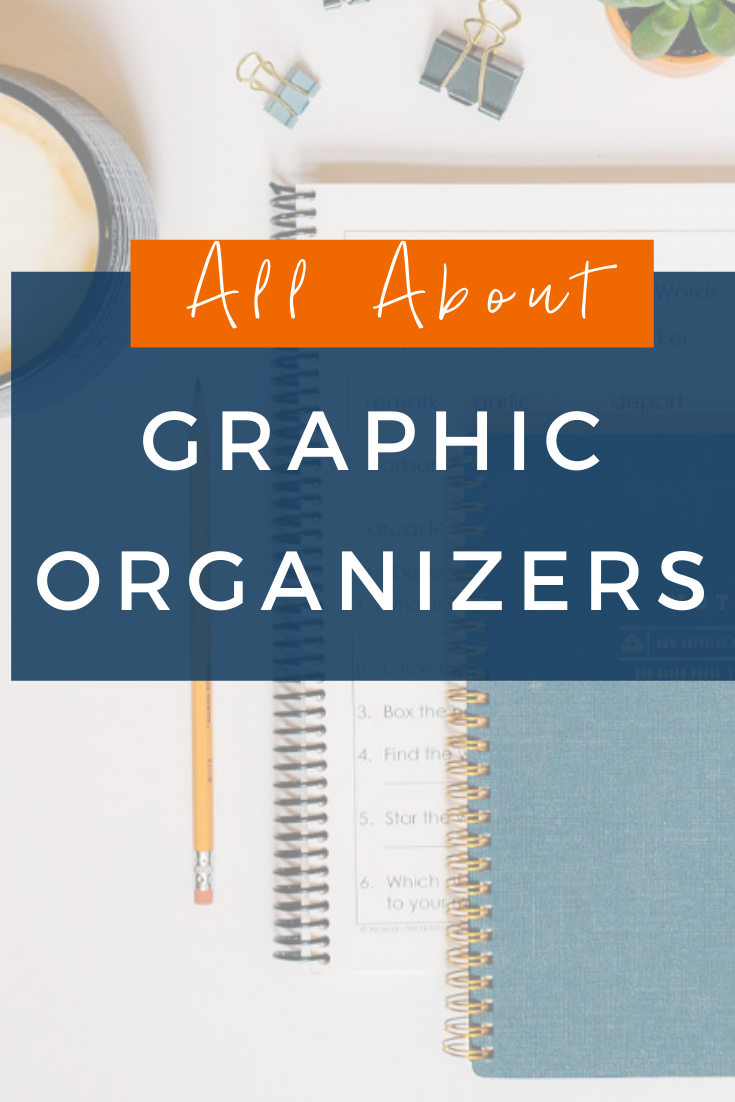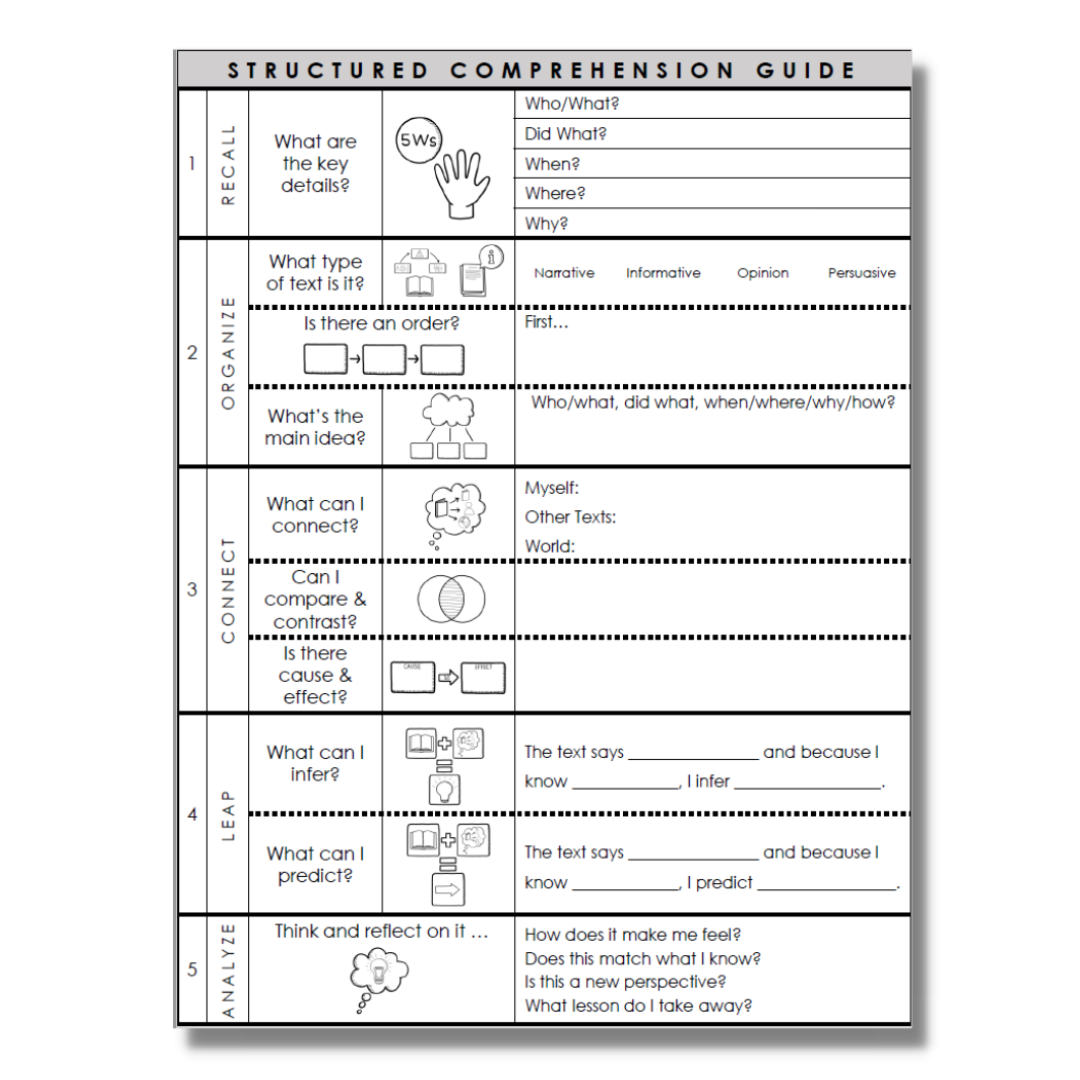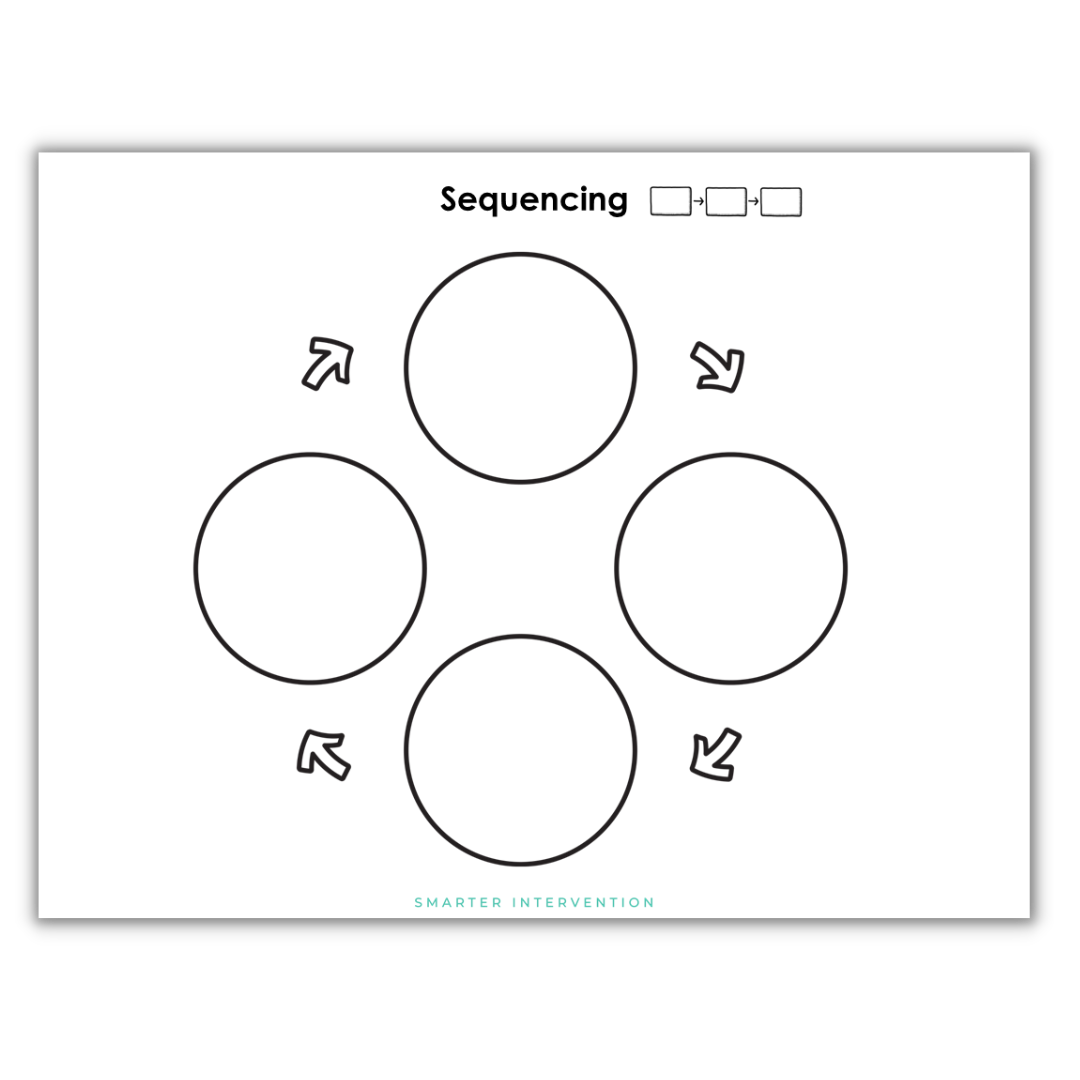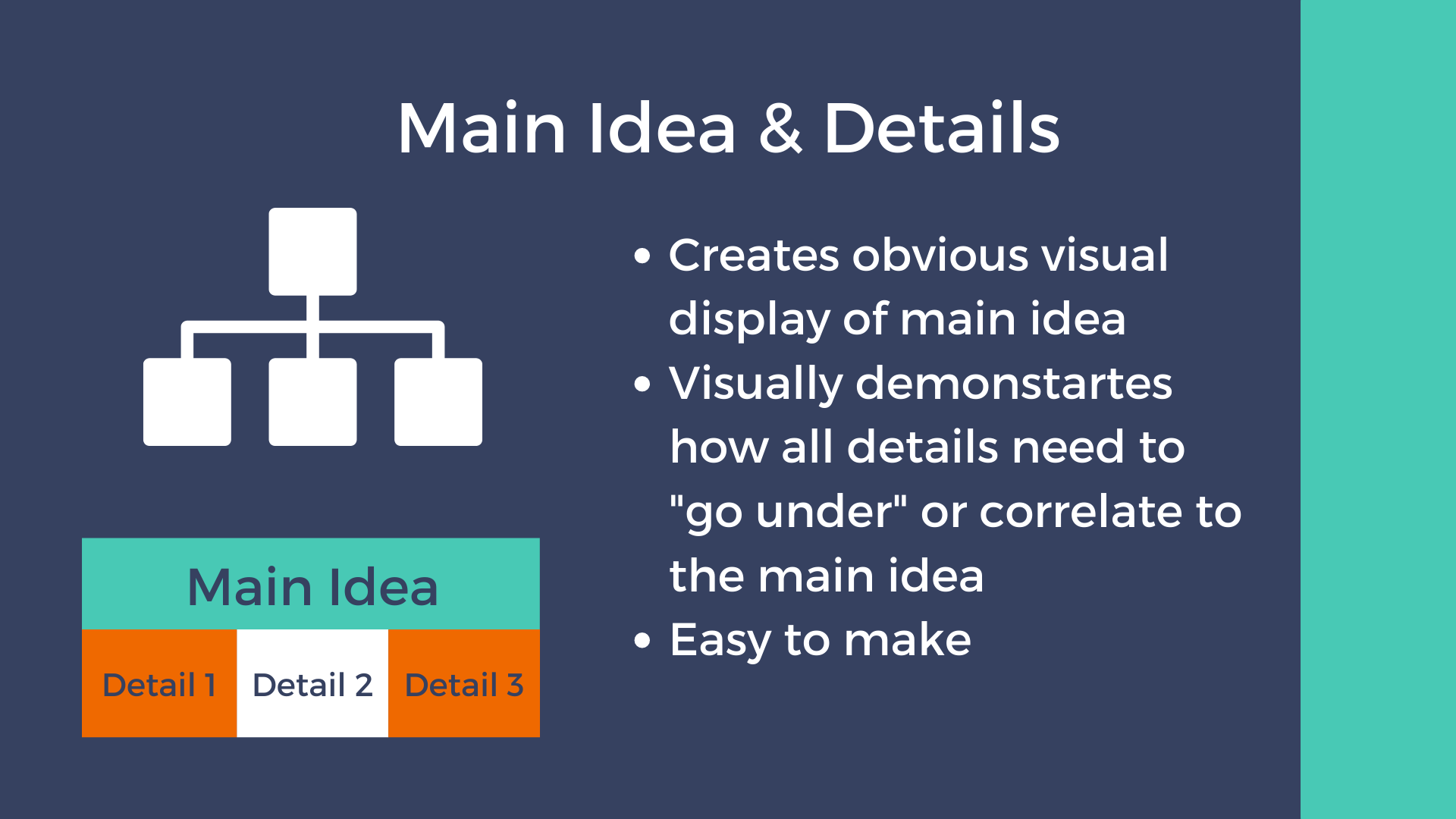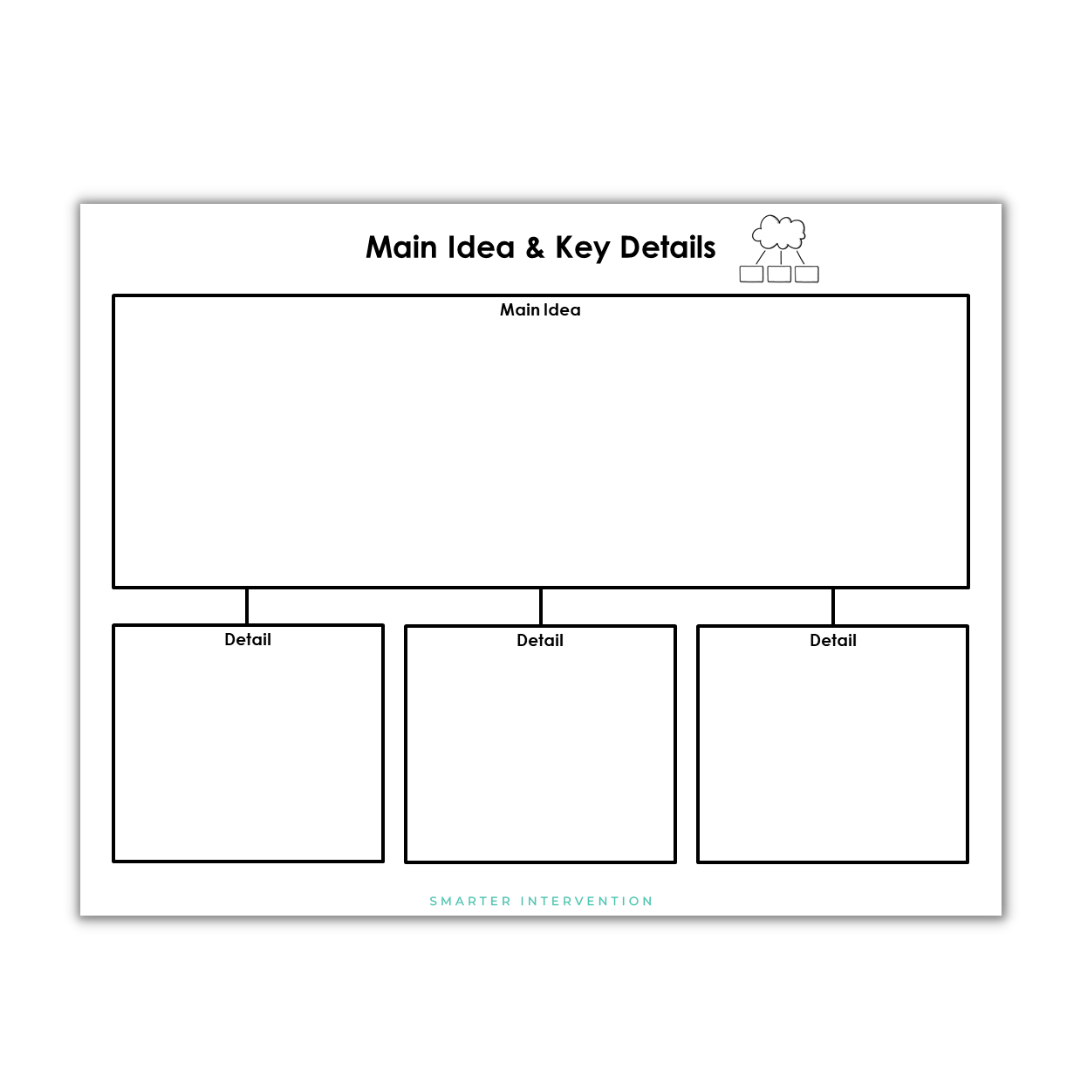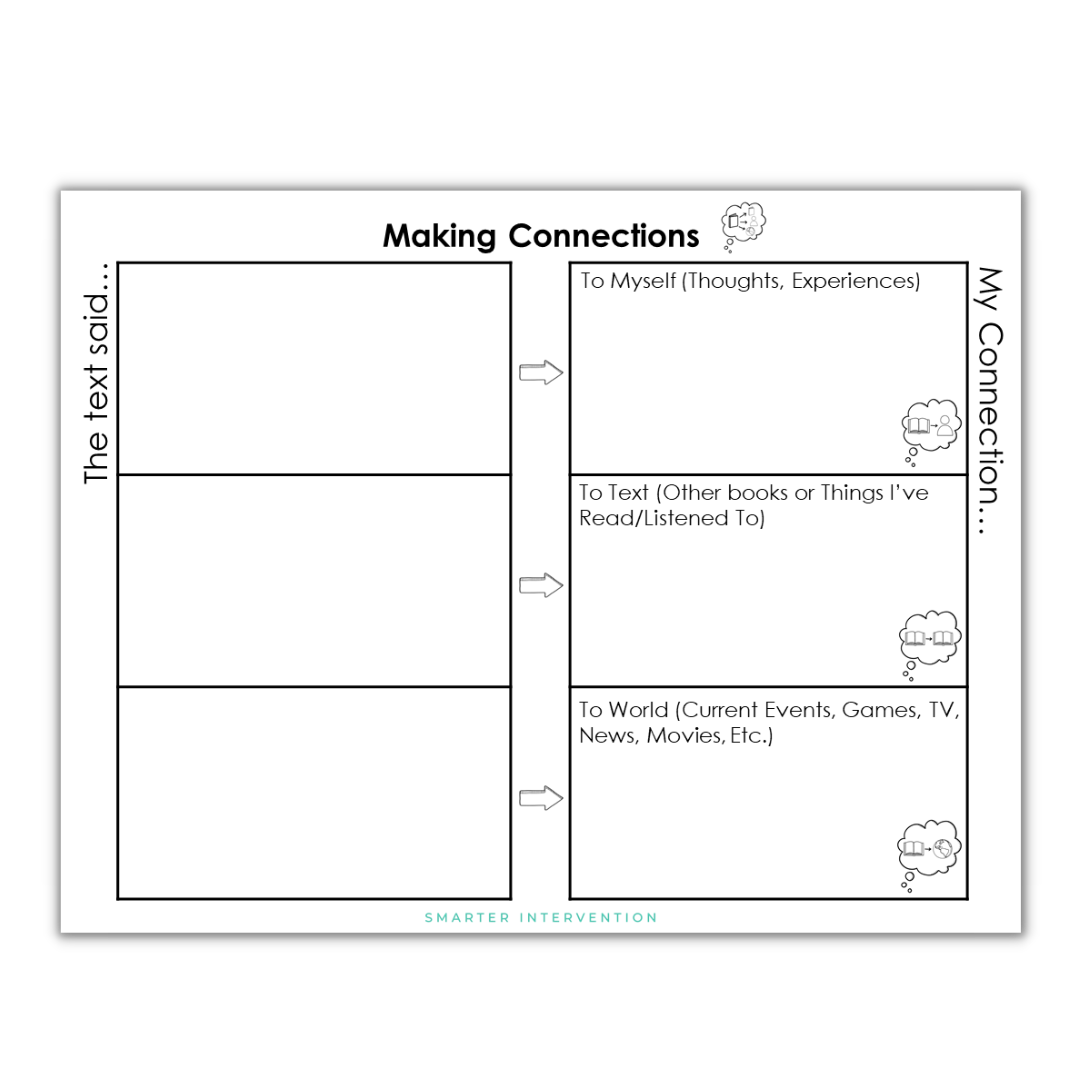All About Graphic Organizers
We’re so glad you’re here. We wanted to share one of the best comprehension tools ever - Graphic Organizers!
What are Graphic Organizers?
Graphic organizers are visual displays of information and incredible tools to help students with listening comprehension, reading comprehension, and organizing their writing.
Does it get any better than that?
Graphic organizers can also be called mind maps, concept maps, or concept webs, but they all have the same wonderful purpose - to solidify comprehension.
Graphic organizers explicitly teach students how to organize and connect information.
They can visually show what information to prioritize and help students with brainstorming and connecting any background information.
Why should we use them?
Our brains are constantly making connections. When we hear a song on the radio, we can instantly make connections on whether we know the song or not, whether we know the artist, whether we like the song based on previous experiences, and even what genre the song is based on other songs we know. So much happens in a split second. Our brain branches out into a million different directions based on a few seconds of a song.
Graphic organizers can imitate how our brains work. They clearly show the connections between ideas and processes that our brains are already making. Sometimes, we just don’t know how to organize those connections. By using Graphic Organizers, we can solidify that cognitive process. By supporting the organizational piece for students (by having it already outlined), they can then focus on content, relationships, and connections their brains are already making. When students can focus on those connections between ideas, their comprehension solidifies. Check out our blog about effective comprehension skills here!
One of the best parts of using graphic organizers is that it helps increase student engagement.
It allows them to focus on finding the necessary information to make the connections we need for comprehension. Once students can comprehend the material, they’re going to naturally be more excited about it. I recently read a book about astrophysics and I kept falling asleep during it. Why? Because I did not comprehend it whatsoever. After 300 pages of mindless reading, I still have no idea what String Theory is. But, when I read something I can comprehend, something that my brain understands and can make connections to, I become more excited about the topic. Your students will be the same way.
How do I use graphic organizers?
Graphic Organizers work best when they are simple. When they are clear, straightforward, and hit a focused topic, the students can focus on the content. Usually, simpler is better. We like to use graphic organizers often and we even organize specific components of our lessons around them.
We use graphic organizers for listening comprehension, reading comprehension, writing, and even math.
It’s important that we teach students how to use these tools in a structured and systematic way.
So, for example, when teaching students how to use graphic organizers to support comprehension, we align a graphic organizer to each comprehension strategy. This way they now only know how to use each graphic organizer but WHEN to use each organizer.
Different Kinds of Graphic Organizers
There are so many different graphic organizers that you can use. Here are just a few examples:
Direct Recall Organizer
One of the first graphic organizers we use with students is a direct recall organizer. This organizer helps students attend to key information they should be listening for or looking for as they are learning.
We usually use the direct recall organizer as our first step because it sets the stage for more advanced graphic organization strategies.
We can use this organizer to support comprehension (both reading and listening). Once we have the key information, we can start looking at how we further organize that information (sequencing, making connections, making leaps).
Sequencing Map
A sequencing map is excellent for helping students logically organize information. There are many different types of sequences that information can follow. Typically sequencing maps are wonderful for directions.
For students who tend to struggle with multi-step problems, sequences break things down step-by-step to make it very clear for them.
Plus, they can show processes and sequences of events. There are a number of different ways these sequences can be built but at a basic level, we are looking at first, next, then, last on a chronological time frame. Sequences can follow a cycle. Sequence organizers are perfect for comprehension and math problem-solving!
Main Idea & Details Organizer
This organizer is so simple yet so effective in showing how all details must fit under and be related to the main idea. In our lessons, we specifically teach students to focus on identifying the main idea and key details. We explain that key details should fit under the main idea umbrella.
Sometimes, it’s easier for our students to identify the main idea and then the supporting details. Other times, we find that by identifying key information (using the Direct Recall Organizer) they can determine the main idea.
We use the framework who/what, did what, when/where/why to help students generate a summary sentence.
Making Connections Organizers
Once students have identified the key information from the text and have organized that information into a logical order and generated a main idea, they can begin connecting to the information - this is where TRUE learning and engagement really come in. There are tons of ways we can connect to information.
A few of the key types of connections we teach include text-to-self, text-to-text, text-to-world, compare and contrast, and cause and effect.
Text Connections
The three key text connections we want students to make include connecting the text to themselves (their thoughts and experiences), connecting the text to other texts (this is where we start thinking about compare and contrast), and connecting to the world they know (which sets them up to critically think about and analyze text).
Compare & Contrast Organizers
The most common type of compare and contrast organizer is a Venn diagram. We can always start with that because it’s a very clear way to visualize information.
As students progress, we can start taking the simple Venn diagram and expanding it to support deeper comprehension and writing skills!
Cause & Effect Diagrams
Cause & Effect diagrams show the consequences or results of a certain action or event. If your students are struggling with identifying or understanding causes and effects, this is a great graphic organizer to use.
For example, one effect of not doing your homework is getting a bad grade. That can then eventually lead to how a character made a certain decision that led to a conflict, or even how adding a certain chemical to a scientific reaction causes a certain effect.
Last thoughts….
Just like any new topic, it’s best to introduce these strategies one at a time and be consistent with using them. The more consistent you are with using them, the better students will be at using them. Ultimately, we want students to internalize these organizers so they can doodle them out or use them as note-taking strategies even without having the physical organizer! Again, we can use these strategies to support listening comprehension, reading comprehension, writing, and mathematical problem-solving!
If you want to grab these graphic organizers, along with our direct comprehension lessons and activities, check out our 5 Core Components of Literacy Activity Library below!

